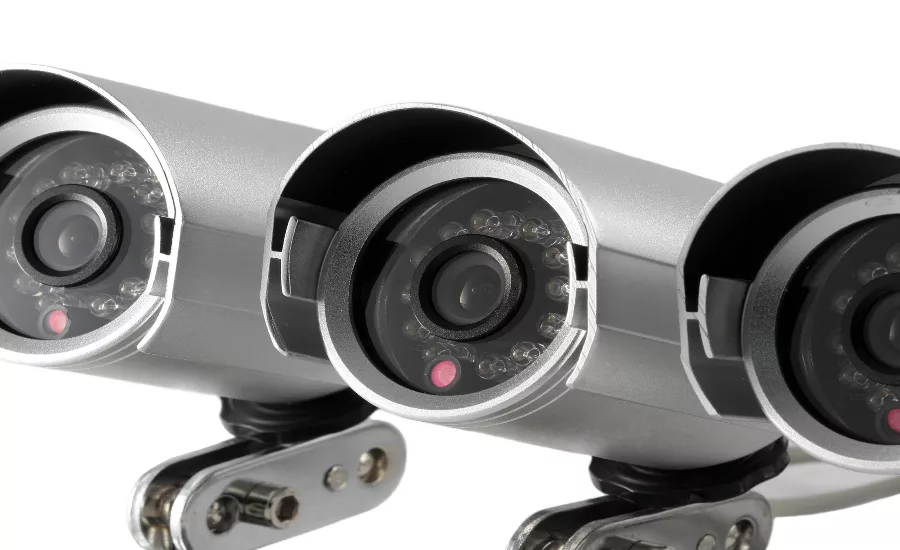Top ten checklist: Identifying your next video surveillance storage system


The global data growth explosion continues due to companies accelerating their digital transformation and IoT implementations, resulting in more data being created daily “at the edge” — the physical location where events and transactions occur. Much of this new data, including video, audio, images, and sensor data, is unstructured and requires different storage implementations to manage and utilize. Video surveillance footage is one of the largest segments of data growth in the post-pandemic world, with increasingly higher quality cameras in more places, exponentially increasing the volume of video data generation.
Vertical industries driving this growth include retail, energy, healthcare, manufacturing, and law enforcement, as the very large datasets intrinsic to these verticals typically require expensive storage systems and significant management resources. Organizations are now forced to find new ways to capture, store, and manage this influx of video data. What’s the best way to capture, store and use all this video data?
Video is being generated in more sites with higher resolutions creating storage and management challenges. Organizations are under pressure to retain video to meet compliance and legal requirements for video storage and to keep up with the latest best practices. Video requires substantial storage, can be difficult to manage, and is costly. But when managed well, with a solution designed specifically for video surveillance data storage, video assets carry tremendous value and can pave the way for organization improvement and insight.
Video surveillance and its related storage requirements have evolved from a “nice to have” to a must-have to meet changing compliance requirements and to extract value from all that video. Meanwhile, camera installations — and edge sites — are multiplying as companies add remote offices and higher camera resolutions emerge seemingly overnight. Adding to this is the explosion of data being created at the edge and the need to record 24x7, which only exacerbates the issue. Almost a petabyte of high-resolution video data is predicted to be created daily at any single edge site. Ever-changing compliance, legal, and retention requirements compound a mounting problem that can be easy to tackle…with a simple checklist.
There are several key attributes that any security or IT manager should consider before purchasing a video surveillance storage solution. We’ve created this checklist for you to think about as you’re reviewing the market’s options to ensure your critical needs are addressed prior to purchasing.
Key attributes of a video surveillance storage system should adequately address several pain points. Ensure that your video surveillance storage solution provides:
1. Support for thousands of cameras and their standards to future-proof your video data and provide flexibility.
2. Storage that can handle 24x7 continuous recording in order to create a comprehensive digital evidence management solution.
3. Policy-driven video data tiering keeps the most recent video that may need to be retrieved fast, on flash or spinning disk. Set policies to automatically move video to secondary or tertiary tiers to less expensive disk storage, i.e., tape or optical.
4. Low-resolution versions of high-resolution originals for faster retrieval and playback and to reduce network strain and congestion. These versions are perfect for day-to-day use, and high-res versions are always available when needed.
5. Extended video retention to meet what could be unforeseen future requirements. You never know the value of a video until you need it.
6. Digital fingerprints and chain of custody history to ensure the original video assets remain unaltered, making it easier to meet the latest compliance and legal requirements.
7. Intuitive, simple search that can be run at the edge with no IT manager onsite.
8. Reliability and uptime, as video assets are rendered useless if they can’t be retrieved fast and utilized quickly and easily.
9. Access to analysis, new opportunity identification, and robust use of smart metadata and content tagging to aid in organizational improvement and breakthroughs.
10. Storage choice — look for solutions that allow the use of different storage types and different storage tiers to optimize value - performance and cost — without sacrificing features or functionality.
Video surveillance is growing in volume and importance. Modern surveillance solutions support thousands of cameras that produce tremendously high-quality video. That’s the good news. But all that video requires huge amounts of storage, with storage usually representing the highest cost item in any video surveillance system. And storage is only the first step. The ability to find, retrieve, and use the right video quickly and easily is as important as having it in the first place.
Video storage solutions should use multiple storage types and tiers so customers have the flexibility and can afford to retain video for as long as they choose, even forever. They must be secure and ensure data integrity while also being reliable and easy to manage. Video storage solutions must provide simple yet intelligent search, so organizations can not only meet legal and compliance requirements but can also gain insight and extract value from their video data. These criteria will ensure customers can retain and leverage video on their terms and in new ways — all within a reasonable budget.
Looking for a reprint of this article?
From high-res PDFs to custom plaques, order your copy today!







